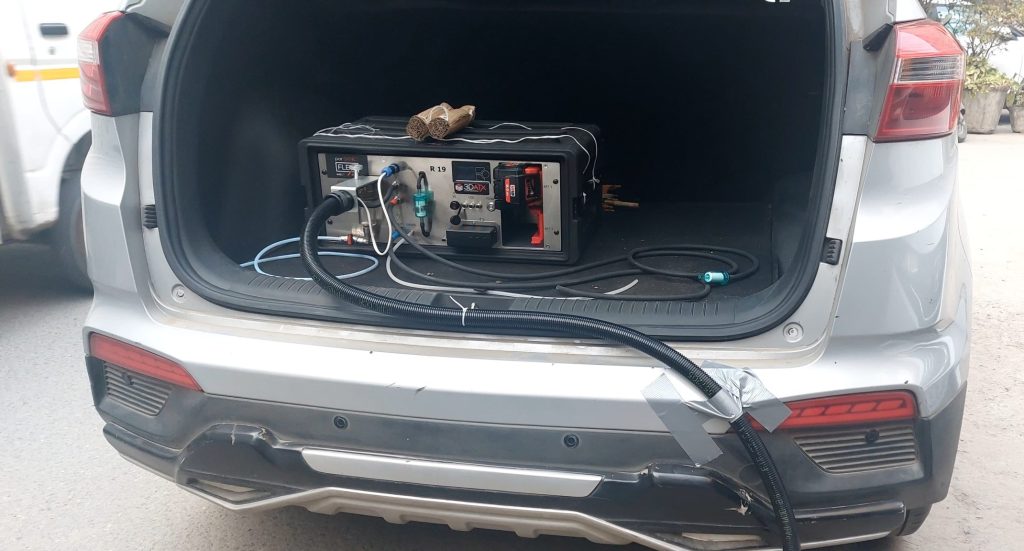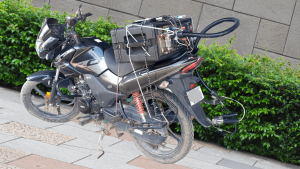
Unmasking Air Pollution in India: A Closer Look at the PEMS Revolution
A Closer Look at the PEMS Revolution
In the vibrant tapestry of urban life in India, the air we breathe is becoming increasingly laden with invisible threats. Air pollution has emerged as a silent assailant, impacting public health across major cities. This blog aims to dissect the sources of pollution, the varying sizes of particles, the covert presence of nanoparticles, and the pivotal role of emission testing, all while introducing the game-changing Portable Emission Measurement System (PEMS) and the advent of mini PEMS for effortless on-road testing.
Sources of Pollution in Urban Cities: A Deeper Dive into Culprits
1.Vehicular Emissions: The Traffic Tango
The vehicular swarm on Indian roads releases pollutants into the air, with emissions from cars, trucks, and motorcycles contributing to the pollution cocktail. Nitrogen oxides (NOx), carbon monoxide (CO), and particulate matter (PM) are the notorious byproducts.
2.Industrial Operations: The Factories’ Footprint
Industrial hubs in urban areas unleash a multitude of pollutants, including sulfur dioxide (SO2), volatile organic compounds (VOCs), and fine particles. This often transforms industrial zones into pollution hotspots.
3. Construction and Dust: The Urban Churn
The rapid pace of construction and the churn of urban development whip up substantial dust from construction sites, unpaved roads, and demolitions, intensifying the particulate matter in the air.
4. Biomass Burning: The Urban-Rural Nexus
Biomass combustion for cooking, particularly in slum areas, adds another layer to urban pollution, emitting particles and gases like carbon dioxide (CO2) and methane (CH4).
Particle Sizes Unveiled: Navigating the Urban Particle Spectrum
1. PM10 and PM2.5: The Covert Culprits
Particulate Matter (PM) comes in different sizes. PM10 (particles with a diameter of 10 micrometers or less) and PM2.5 (particles of 2.5 micrometers or less) pose significant health risks as they can penetrate deep into the respiratory system.
2. Ultrafine Particles: Nanoparticles in Stealth Mode
The true stealth players are nanoparticles, sizing less than 0.1 micrometers. Originating from vehicle exhaust and industrial processes, these ultrafine particles can infiltrate the bloodstream, raising health concerns not yet fully understood.
Emission Testing in Focus: Beyond Laboratory Constraints
1. Real Driving Conditions: The Road Reality
Traditional emission tests often occur in controlled environments, but the real test is on the road. Stop-and-go traffic, idling at signals, and diverse driving patterns can significantly impact emissions.
2. Importance of Vehicle Testing: Clearing the Air
Regular emission testing for vehicles ensures that they adhere to pollution control norms. In India, the Bharat Stage (BS) emission standards set limits for pollutants, with higher-stage standards demanding cleaner fuels and advanced emission control technologies.
3. The PEMS Revolution: Mini PEMS and On-Road Testing
Enter the Portable Emission Measurement System (PEMS), a transformative technology for on-road testing. The introduction of mini PEMS has simplified the testing process, providing real-time emission data with ease and accuracy.

iPEMS (integrated portable Emission Monitoring System) 3DATX, onboard measurements
Relating it to the Indian Context: A Call for Change
India’s battle against air pollution demands innovation and commitment. The introduction of PEMS, especially mini PEMS, aligns with the need for efficient on-road testing. Key actions include:
- Policy Measures: Strict enforcement of emission standards and the integration of PEMS technology into regulatory frameworks. With the enforcement of RDE testing as a compulsory process w.e.f. April 1, 2023, India is already on path for more of on-road testing! In-Service Compliance (ISC) or In-Use Performance Ratio (IUPR) has to be complied to, as per the emission norms laid down by MoRTH (Ministry of Road Transport and Highways), for which a lot of PEMS testing would be required.
- Public Awareness: Educating citizens on the impact of air pollution and the role of PEMS in creating cleaner urban air, specifically while driving vehicles. This would in future, be even related to the insurance/ reselling value of the vehicles, hence a driver would need to be mindful of how he/she drives the vehicle to ensure minimal emissions to get a good score on the ISC Certification.
- Research on Vehicle Emissions: On-road testing demands the utilization of highly advanced instrumentation systems, which can be prohibitively expensive and time-consuming for researchers or scientists aiming to gather emissions data during real driving scenarios. This challenge has historically hindered emission scientists and research institutions from engaging in real driving emission testing. However, iPEMS is poised to revolutionize the vehicle emission testing landscape by offering a significantly reduced cost, weight, and time requirement, approximately 1/4th the cost, 1/6th the weight, and 1/20th the time needed for an on-road testing cycle.
- Real-driving emissions on two-wheelers: Testing for real-driving emissions on two-wheelers presents unique challenges. The weight constraints of a PEMS make it impractical to conduct on-road drive tests for two-wheelers. India, boasting the highest number of registered two-wheelers globally at 243 million in 2020 (source: Ministry of Road Transport and Highways), faces a pressing need for effective emission control measures. According to a 2022 study by BITS Pilani, motorized two-wheelers (M2W) contribute nearly 32% of transportation-related greenhouse gas emissions in India. Therefore, there is a critical necessity to enhance on-road emission testing for two-wheelers to devise strategies for mitigating their real driving emissions. Presently, mini PEMS emerges as the most viable solution for conducting on-road emission testing in this context.

parSYNC FLEX-PNC PEMS on a motorcycle
Conclusion: Breathing Cleaner Futures
As we unveil the layers of air pollution in top Indian cities, the role of PEMS, including mini PEMS, becomes paramount. The fight against air pollution is a race against time. Recognizing the sources, understanding the sizes of particles, acknowledging the presence of nanoparticles, and implementing effective emission testing are crucial steps towards a breathable future. It’s a collective responsibility – from policymakers to industries to every researcher in the field of air quality.
Let’s clear the urban haze, not just for us but for the generations to come.

